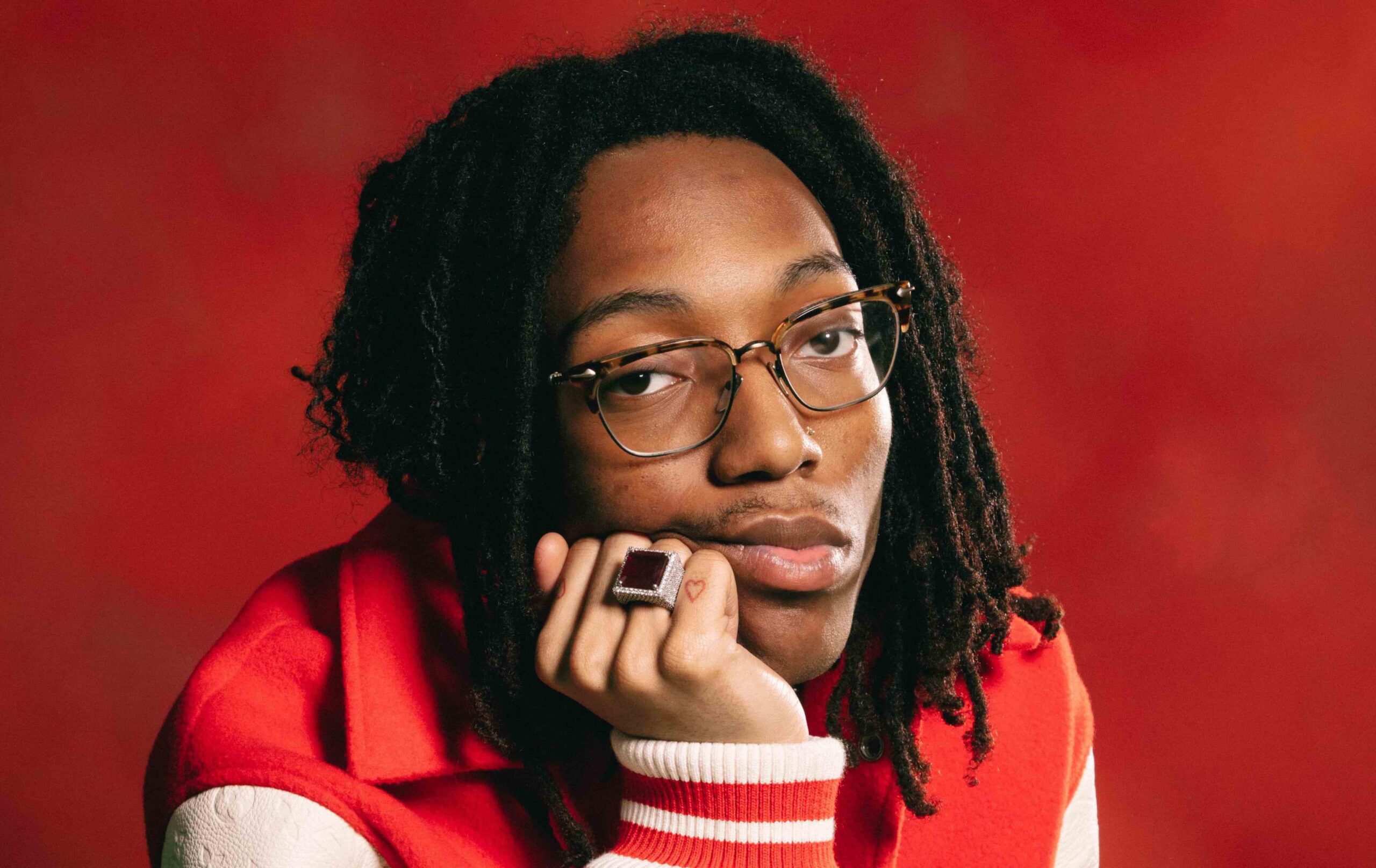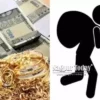
Mark Ronson‘s fingerprints are everywhere in pop music.
Whether he’s behind the board as a producer, penning earwormy hooks for some music’s biggest names, or employing a crate digger’s mindset to create his own records, you’d be hard-pressed to find something on your playlist that Ronson hasn’t touched. The seven-time GRAMMY winner might as well be considered the industry’s Kevin Bacon — he’s worthy of his own “six degrees” game.
Today, Ronson is on his way back to New York City from some time spent in the Hudson Valley — a much-need reprieve after a blockbuster summer that saw his Barbie movie soundtrack top charts around the world.
“I love this film so much and I did something I’ve never done before by executive producing and overseeing [its music],” he tells GRAMMY.com.
That Ronson still has things to check off his professional bucket list is something of a surprise. The stepson of Foreigner guitarist Mick Jones, Ronson got his start DJing in New York in the ’90s, bridging his twin loves of funk and hip-hop. In the latter part of the decade, Diddy hired Ronson to DJ several parties, thus opening up the then-twentysomething to a world of A-list talent. Ronson’s elite status only grew over decades — from DJing Paul McCartney‘s wedding in 2011 (for which he refused to accept payment), to creating the ubiquitous hit “Uptown Funk,” and curating the final night of the iconic 2023 Montreux Jazz Festival.
Ronson has released five of his own albums — beginning with 2003’s Here Comes The Fuzz and up to 2019’s Late Night Feelings — each of which is a star-studded affair, featuring everyone from Miley Cryus and Camilla Cabello to Bruno Mars and Mary J. Blige (as well as the occasional lawsuit over interpolation and sampling). Over the years, he’s developed a cadre of session musicians and production collaborators, creating an incredibly pop savvy sound often built on horn-driven funk and soul.
At the bedrock of Ronson’s production — and among his best-known works — is Amy Winehouse‘s GRAMMY-winning album Back To Black. Since that 2006 release, Ronson has collaborated with an ever-increasing number of major acts, composing, arranging, producing, writing or playing on (and sometimes all of the above) works by Lady Gaga, Duran Duran, Dua Lipa, Adele, Queens of the Stone Age, and even Sir Paul himself.
Ronson will add another first to his list: author. A hybrid memoir and cultural history, the still-in-progress 93 ‘Til Infinity will cover the New York downtown club scene of Ronson’s salad days.
“It’s really fun to revisit that era, and it was a very specific time in DJing where DJs weren’t really famous,” he recalls. “There was no stage; sometimes the turntables were shoved in the corner at the end of the bar and you would have to crane your neck to even see the crowd. I sound like Grandpa Simpson, but I loved it.”
Ronson is en route to a DJ gig as we speak, though the new dad says he’ll be “kicking back into high gear on the book” soon. “[Writing it] requires really falling off for seven hours in the basement, like Stephen King says in his book. But I like that,” he says.
Ahead of a celebration of Barbie The Album at the GRAMMY Museum on Sept. 27, Mark Ronson shared the stories behind some of his favorite productions – including the song that makes people “stupidly happy.”
“Ooh Wee,” Here Comes The Fuzz feat. Ghostface Killah, Nate Dogg, Trife and Saigon (2003)
I went to see Boogie Nights in the theater and I remember this scene where Mark Wahlberg’s a busboy on roller skates and in the background there was this song playing that had just this string thing that just hit me so hard. I bought the Boogie Nights soundtrack and it wasn’t on there — obviously this is 20 years before Shazam — then I figured out it was the song called “Sunny” by Boney M.
When I was making my first record, I was sort of locked up by myself in the studio on 54th Street just experimenting, making tracks all the time. That string line, I could never figure out what to do with the sample. I tried 80 different tempos and drum beats over it, and it wasn’t until I just put that drum break behind it, the drums from the song, and it just all sort of gelled together.
Because that was an era in hip-hop where people weren’t really using drum loops or drum breaks anymore. It was about chopping and having hard kicks and snares, like DJ Premiere and Timbaland. The DJ in me was like, f— it, let me just try putting a drum break under it. It all gelled and felt good.
I was a huge Wu-Tang fan, and at that point Ghostface was my favorite out of the group and I loved his solo records. I’ve never been more nervous in some weird way to talk to somebody — nervous and giddy, and what if I just sound so dorky?
I remember he was like, “Yeah, I get it. I think it’s dope. It’s like some Saturday Night Fever with Tony Manero s—.” I guess because of the strings and it was so disco, and Ghost always had this pension for those disco kind of uptempo beats.
The album had to be handed in and I didn’t have a hook that I liked on this song yet. Sylvia Rhone was the head of Elektra and she said, “I could try and get Nate Dogg on it.” Of course that was the dream. I sent him the track, and it was probably two days before I had to master the album, on a Sunday. He sent me the files back, and all the waveforms were blank.
I had to call Nate Dogg at like 10 a.m. at home on a Sunday. While he’s on the phone, he goes back in the studio and turns all his equipment on, trying to do the session.
The fanboy thing is still very real because I still work with people all the time that I’m a fan of. At that age, being in the studio with M.O.P., Mos Def, Q-Tip, Jack White, Freeway, Nate. I was just trying to keep it together some of the time.
“Rehab” – Amy Winehouse, Back to Black (2006)
“Rehab” just came about in general because Amy was telling me an anecdote. She was really together when we worked — she might not have been sober, but she got her whole life together. She was telling me about this time in her life that was difficult and she was in a really bad place. She said, “And my dad and manager came over and they tried to make me go to rehab and I was like, ‘No, no, no.'”
I remember that it instantly sounded like a chorus to me, so we went back to my studio and we made the demo. That was when the Strokes and the Libertines were really big. I remember [the drums] sounded much more like an indie beat, even though it came from soul and Motown and the original rock ‘n’ roll. She would tease me; she’s like, “You trying to make me sound like the bloody Libertines.”
When [studio group] the Dap-Kings played it, they just brought it to life. I didn’t really know anything about analog recording at that point. I only knew how to make s— sound analog by sampling records, so to hear them all play in the original Daptone studio, all the drums bleeding into the piano…. I felt like I was floating because I couldn’t believe that anybody could still make that drum sound in 2006.
Amy couldn’t be there for the recording, so I was taking a CD-J into the studio with me and I had her demo vocals on a cappella. I was playing it live with the band so that they could keep pace with the arrangement. I loved it so much.
“Valerie,” feat. Amy Winehouse,Version (2007)
Amy had never met the Dap-Kings, even though they had been the band for all the songs that I had done on Back to Black. There was this really lovely day in Brooklyn where I took her to the studio to meet all the guys. The album was already out; there was a very good feeling about it [and] they obviously made something really special together. Amy loved the way the record sounded so much, she was so grateful. They loved her.
While we’re all having this love-in in Bushwick, I was finishing my album Version and I said, “Maybe we could just cut a song for my record?” The whole theme of the record had sort of been taking more guitar indie bands like the Smiths, the Jam, the Kaiser Chiefs, and turning those into R&B or soul arrangements. I asked Amy if she knew any songs like that. She’s like, “Yeah, they play this one song down at my local. It’s called ‘Valerie,'” and she played us all the Zutons’ version. I didn’t really hear it at first.
The first version we did was this very Curtis Mayfield kind of sweet soul. Part of me was just like, This is really good, but I feel like there’s a hit version as well. I don’t have that kind of crass thing where everything needs to be a hit, but…
Everybody was already packing up their instruments and I didn’t know the guys that well yet, so it was kind of a pain in the ass to be like, “Hey, I know everybody just wants to go onto the f—ing bar and get a beer right now, but can we just do one more version where we speed it up a little?” Everybody flips open their guitar cases and we do like two more takes, and that’s the version on my album.
“Alligator” – Paul McCartney, NEW (2013)
We’ve done other things together, but I’ve only really [worked on] three songs on his album, NEW. “New” I just loved as soon as he sent me the demo, because as a McCartney fan, it gives you the same feeling as “We Can Work It Out”; it just has that amazing uplifting feel. That’s just his genius. I love “Alligator” maybe a little more because it’s more weird.
He definitely gives you a day to f— up and be an idiot because you’re just so nervous to be in the studio with McCartney. By the second day it’s like, okay, get your s— together.
I remember running around just like, What sound can I find for Paul McCartney that every other amazing producer who ever recorded him [hasn’t found already]? He was like, “Anybody can record a pristine acoustic guitar. Give me something with some characteristic that’s iconic. That feels like someone just put the needle down on track one on an album.”
That’s something I always try to remember: don’t just make it sound like a guitar, make it sound like a record.
“Uptown Funk” feat. Bruno Mars, Uptown Special (2015)
My enjoyment of the song is now gauged by the people that I’m playing it for. I was playing at this party at Public Records [in Brooklyn] on Sunday. I knew that I wasn’t going to play that song on that night; it wasn’t right for that crowd or something. And then an hour into my set, the vibe is really good, and I was just like, f— it and I dropped it, and people went crazy.
I’m a little extra critical sometimes on the more commercial songs, thinking nobody wants to hear this or this doesn’t really have a place in this space. I think it’s just a song that makes people stupidly happy, and that’s cool.
The lyrics [to “Uptown Funk”] came really quick. We had the jam: Bruno was on drums, I was playing bass, Jeff Bhasker was on keys, and then Phil Lawrence was there and we jammed for five hours. We just chopped up our favorite parts of the instrumental jam, and then just started writing lyrics almost like a cipher. Bruno had been playing the Trinidad James song [“All Gold Everything”] in his live sets and playing it over a sort of uptempo, funky James Brown, “Get Up Off That Thing” groove.
We were just throwing about lyrics, throwing a little bit of the cadence of the Trinidad James song. Then when Jeff Bhasker said, “This s—, that ice cold/That Michelle Pfeiffer, that white gold.” It was like a great rap line. Then everything started to elevate a little bit from there on up.
That first day, we had the whole first verse and it felt great. Every time we went back in the studio, a lot of the times it would feel labored and not as good as that first verse. So it really took a long time to get in. Sometimes we’d go in the studio for three days and then at the end of the whole session we realized, we actually only liked these four bars.
So we kept building on it, and luckily Bruno didn’t really let it die. Bruno was touring Unorthodox Jukebox; I was just flying around the country with a five string bass just to get the song done.
“Uptown Funk” still ended at Daptone…to do the horns last with Dave [Guy] and Neil [Sugarman], me. It’s almost like you’ve always got to go through Daptone to finish something.
Bruno came up with that horn line. He was like, “I know you’re going to kill me because you’re trying to get away from being the horn guy, but I have this horn line and I think it’s kind of killer.” He demoed it from whatever backstage room on tour and I was like, Okay, here we go.
“Shallow” – Bradley Cooper and Lady Gaga, A Star Is Born Soundtrack (2018)
It’s very rare that I write on a song that I don’t have to produce as well. We wrote that song in the middle of sessions for [2016’s] Joanne, and then Gaga produced the whole Star is Born soundtrack herself. I remember we all had some tingly feelings when we were writing it.
It wasn’t meant to be a duet ever. Then Bradley wrote it into the film; it becomes the beginning of their love story. Bradley showed [me a rough cut] at his house, I remember just being like, he’s taking this special song [and] made it put its hooks into you. This film, and the story, and the way this song is unfolding is so special.
Then also shout to Lukas Nelson, because that guitar that he came up with that opens the song was not in our demo, and that is such an iconic, memorable part of the song.
The film and the script was really powerful, and I think that me, [co-writers] Andrew [Wyatt], Anthony [Rossomando], Gaga were all in this sort of heartbreak place. We’re all just going through our own dramas in the song. The juju was really good and a little spooky in the studio that night.
“Electricity” – Dua Lipa & Silk City feat. Diplo, Mark Ronson, Electricity (2018)
That song just always makes me happy. I don’t have a lot of other songs [that sound] like that. I’m always psyched to play that in a set or to go see Diplo play it live.
When I came up DJing in the mid-’90s in New York, if you’re a hip-hop DJ you had to be versed in dancehall, old R&B dance classics, and a little bit of house. So I knew 12 house records, but I love those records.
It came out of a fun jam, just me and Diplo — who I’d known probably at that point for 10, 15 years, but we never got in the studio together. He’s just firing up drum s— and I’m just playing on this old tack piano that was in the studio I just moved into. But it also sounded quite housey.
We came up with those chords and [singer/songwriter] Diana Gordon came over. I never met her before and she just started freestyling some melodies, and it was just so soulful instantly.
We’d moved the key a little bit lower for Dua — she has this amazing husky voice — but we still left Diana’s demo vocal in. She’s singing these mumble, non-word melodies that sound like a sample.
We had that old studio where we did Version and all the Amy demos. It has an old-school elevator that was sort of manual and it would always break down. There were people that were just too afraid, like Cathy Dennis — the brilliant songwriter who wrote “Toxic” and “Can’t Get You Out of My Head” — she would just always be like, “I’m taking the stairs.” We were on the fifth floor and it was a steep, steep walk up. [Editor’s note: The music video for “Electricity” features Ronson and Diplo stuck in an elevator. He notes that he’s gotten stuck several times in real life.]
“Nothing Breaks Like a Heart” feat. Miley Cyrus, Late Night Feelings (2019)
I was in L.A. working in Sound Factory [Studios], and I had seen Miley a couple years back sing “50 Ways to Leave Your Lover” on the “SNL” 40th anniversary; I had never heard her perform with that stripped-down arrangement. I was just so in love with her voice and the tone. I remember hounding my manager, because usually somebody who knows somebody, but Miley Cyrus was completely unreachable and just in another stratosphere.
I was in the studio with [Dap-King] Tommy Brenneck; he’s just such a wonderful player, such a soulful touch. We got this thing going, and then Ilsey [Juber] was saying, like, “What about all these things that break, but nothing breaks like a heart?”
[I thought], You know what? I’ve been trying to hit this girl up for years and nothing ever happened, but let me just try it one more time. I sent it off to Miley, and I guess she was just in a really motivated part of life. She’s like, “This is cool. Where are you guys? I’ll be there Monday.” She came down Monday to the studio, and then her and Illsey wrote the whole rest of the song.
“Break Up Twice” – Lizzo, Special (2022)
[I produced a few other songs on Special], but they didn’t make the cut. There’s one that I really love called “Are You Mad” that might hopefully see the light of day once.
We spent a lot of time together and I love working with her because she has a really eccentric/ avant garde music taste. Like, the Mars Volta is her favorite-ever band; she’s a conservatoire flute player; then she has a strong Prince heritage because she spent time in Minneapolis and she’s been to Paisley Park.
The thing that I really love about her is, even at the status that she was at when we were working, there was never anything too silly or too left field to try. It’s really freeing when you’re with a big artist who isn’t afraid to just f— around and jam and make some s— that you know might not be the thing.
“Break Up Twice” was actually an instrumental that we had done at Diamond Mine with [Daptone family] Tommy [Brenneck], Leon [Michels], Victor [Axelrod] and Nick [Movshon]. I just played that, and it instantly spoke to her and she just started freestyling, adding the harmonies and the sax and the vocal arrangements. I just didn’t quite know how versatile and talented that she was when we first went in the studio. I just remember constantly being impressed and amazed.
Barbie: The Album (2023)
I’m really proud of the Dom Fike song [“Hey Blondie”], the Sam Smith song [“Man I Am”], [Dua Lipa’s] “Dance and Night,” of course. Even the Billie [Eilish] song that we did the string arrangement for. I played the tiniest bit of synths on the Nicki [Minaj]i/Ice [Spice] song.
I love this film so much and I did something I’ve never done before by executive producing and overseeing it. There’s so many songs that I had nothing to do with creatively; sometimes I was just doing admin, hounding Tame Impala to send in a demo.
I’m really proud of “I’m Just Ken.” Of course Ryan Gosling is a superstar in a different kind of way, but the fact that he’s not some superstar pop artist, and the fact that that song has managed to do what it’s done….Obviously it’s so much to do with the film and his performance, but I’m really proud of that song. I was so inspired by the script. I just instantly had the idea for that line.
There was never anything in the script that said Ryan was going to sing a song. It was just something where Greta [Gerwig] and him really loved the demo, and she loved it enough to write it into the film, which was just so exciting. It was happening in a way that felt wonderful and organic, and to then get Josh Freese and Slash, and Wolf Van Halen to play on it and even bring it to even this next level of sonic fullness.
On TikTok and Instagram, I’ve seen people singing it; [even] in Spanish, really intense, really earnest covers. We were never trying to write a parody song or anything that wasn’t earnest, because there’s nothing parody about the film. I guess the chords have a bit of heartbreak in them, a little melancholy, and Ryan’s performance is really lovely.
Barbie score (2023)
We worked equally hard or harder [on the score]. It doesn’t have quite the same shine because obviously it’s not Billie Eilish, Lizzo, and Dua Lipa, but it’s something Andrew [Wyatt] and I did. A piece called “You Failed Me” — that’s during both Barbie and Ken’s meltdown in the middle of the film — I’m quite proud of that. I really love the “Meeting Ruth” orchestral interpolation of the Billie tune as well.
I’ve contributed music to other films and little cues and things like that, but this is the first time that Andrew and I really did a whole movie from start to finish while also doing the soundtrack.
It’s incredibly humbling, too, because when you make a song for someone’s album, you’re working. It’s certainly the most important thing that’s happening. In a film, it could be the second most important thing. You could sometimes say it’s the third most important thing after dialogue and the sound effects. All that’s programmed into your mind about hooks and things like that it’s like, No, actually sometimes get the f— out of the way and just provide a lovely emotional texture for things to sit under things.
The thing that I guess is universal is you’re reacting to an emotion. Especially if it’s a film that you really feel emotionally partial to, you’re watching this wonderful performance on screen and how could you not be inspired by that? We’re so spoiled to have this as our first film where we’re reacting to the emotional heart of this film, which is so rich.
This post was originally published on this site be sure to check out more of their content.







